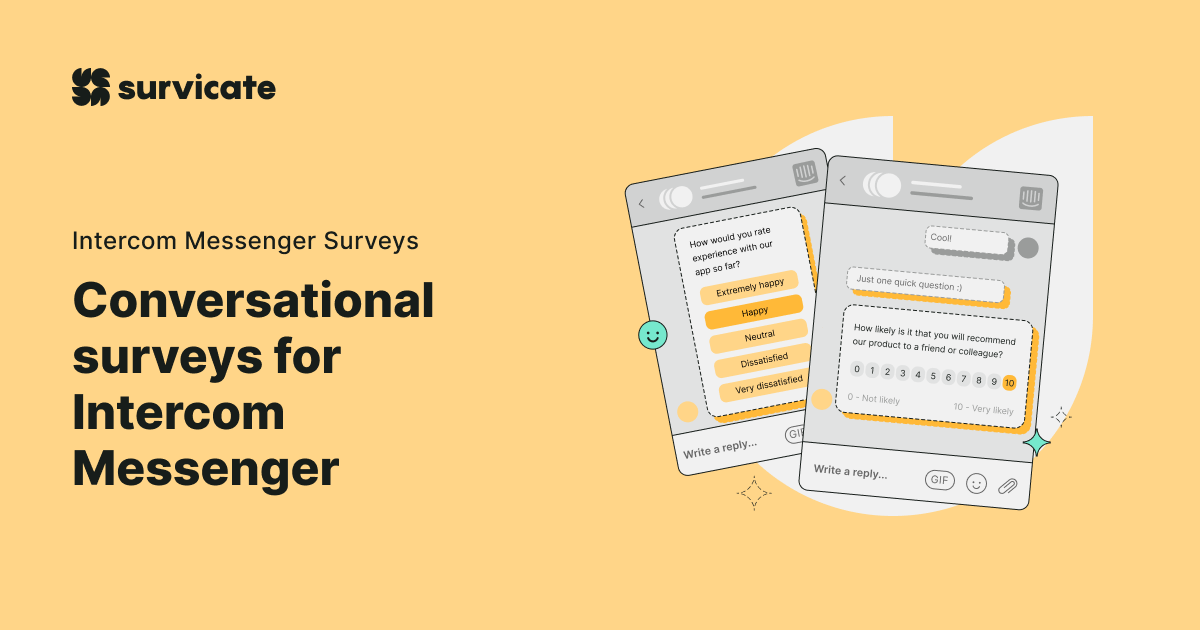Setting up, launching, and analyzing a market research campaign is super easy with Survicate:
1. Edit the survey template
Click the button above the page (next to the template's preview) and sign up with your business email. By doing so, you're signing up for a Flexible account. You can use our tool for free until you collect 100 responses.
Once you sign up, feel free to play around with the template. Edit and customize it according to your needs by adding or deleting questions and the survey microcopy. Use skip logic to make sure you're asking relevant questions only. (For high response rates, surveys should be short and sweet.)
2. Configure the survey
Configure the survey by setting response limits and run time.
Survicate integrates with Slack and Microsoft Teams. To have the market research survey answers flow directly into these tools, which is handy for your team, enable the integration in the feedback collection tool.
3. Send the survey
In the case of market research surveys, you're going to distribute the survey as a link across chosen social media channels. To do so, copy the survey link the Survicate platform generates and paste it into the body of your social media post.
Survicate gives you real-time access to survey responses. To avoid potential problems with the campaign, keep track of the statistics early on in the campaign. This will help you react quickly if any tweaks are needed.
4. Analyze the survey results
On top of having the responses delivered to your inbox, you can track the market research in the tool panel while the campaign is still live.
Start monitoring the survey performance early on after the campaign launch. Keeping track of the statistics will enable you to act quickly if any tweaks are needed to improve the survey response rates.
Finally, analyze your market research survey responses and develop strategies based on the results.
Survicate is a hassle-free tool that gives entrepreneurs, marketers, and product teams consumer feedback necessary to develop successful products.
Sign up today.




.svg)



.webp)




.svg)
.svg)
.svg)

.svg)


.svg)






.svg)




.svg)

















.svg)






























.svg)

.svg)
.svg)



.svg)


















.svg)

.svg)

















-min.jpg)


